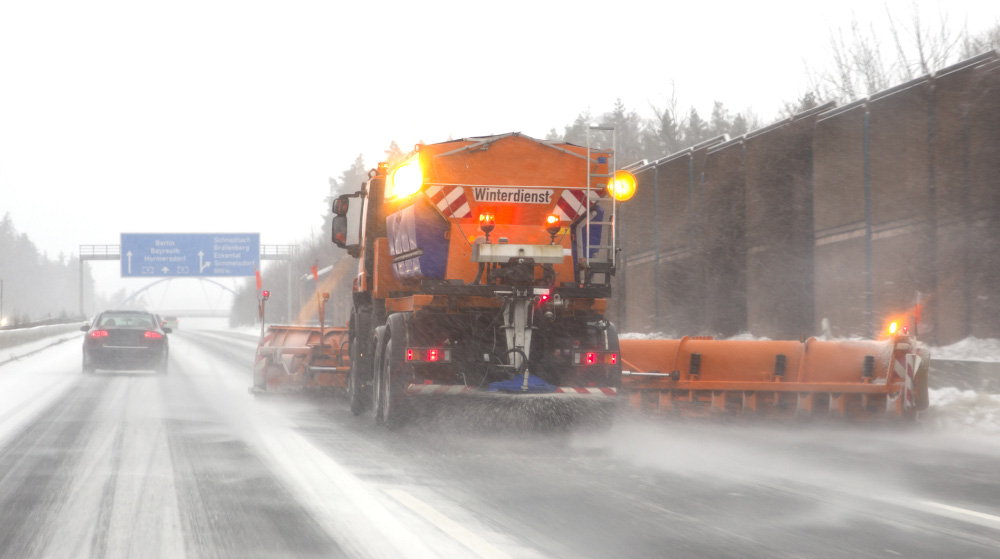Here in Germany the days are getting colder and the winter services is already on alert – a good time to think about monitoring the road weather as seamlessly as possible! In the following you find facts and figures on road safety and some recommendations of measurement systems that provide efficient and almost gapless information.
Around 20% of all accidents with serious injuries and deaths on the roads are weather-related. The weather is also the reason why more than 30 billion hours of driving time are lost each year and shipping companies worldwide lose 2 – 3 billion $ annually. But how can these dangers and losses be reduced? And how can we best deal with temperature and precipitation fluctuations on our traffic routes? This can be answered with complete traffic weather data. These not only have a positive effect on safety but also on costs!
Now- and Forecasting with the help of ice alert systems
For the best handling of dangerous road conditions, you have to know them first. Road weather information systems (RWIS) operated by meteorological services and road maintenance depots are in use all over the world for this purpose. Permanently installed at critical points, they are a reference for certain road sections and have the task to alert winter services in real time, e.g. about the threat of black ice. The data also flows into forecasting models.
RWIS usually consist of built-in or non-invasive road weather sensors, visibility sensors and weather sensors to measure precipitation, ambient temperatures, relative humidity and air pressure.
However, the number of fixed stations per route is limited. A full coverage of the complete course of every winter service by means of stationary systems is simply utopian. The SWIS density is currently around one station every eight to 24 km (5 – 15 miles), depending on the climate zone and landscape. However, the variability of micro-climates on the road poses a constant challenge to those responsible.
Cover more ground – mobile sensors make it possible!
Lufft mobile sensor MARWIS delivers info on road conditions, surface temperatures, dew point temperatures, ice percentages, weather-related friction and more – essentially the same values as stationary road probes – up to 100 times per second. The associated Android or iOS app assigns GPS positions to the MARWIS data points. The measured values are then transmitted via GPRS to a database and fed into graphical user interfaces in the control center, such as ViewMondo, WeatherSentry Online® or Tracemate®.
Comparison: Road maintenance with and without mobile sensors
Without the mobile sensor technology, road maintenance depot employees have to go on their route every winter morning in order to check the road conditions manually – e.g. with the sole of their shoes or by eye. In some sections, mobile radio is irregular, so that the drivers can only pass on their observations to the control center after their 30-minute tour. Then, if necessary, they send a gritting vehicle filled with approx. 24 tons of road salt or brine on the road.
With the mobile all-in-one sensor, winter services can now collect all necessary data in real time directly from the snow plow or spreader vehicle and react quickly. Since the sensor can also transmit all weather data to the control center via an output device such as a tablet or the CloudGate-Box, operations managers have an additional overview of the field data and can coordinate with the drivers. The measured values help to reduce the de-icing agent because it can be spread more precisely. In field trials, up to 50% (approx. 12 tons per operation) of road salt could be saved with the help of the mobile sensor.
The interaction of mobile and stationary weather sensors
Fixed road weather stations and mobile sensors therefore both play important roles in road safety. Stationary systems can cover more parameters than mobile ones, e.g. visibility, subsoil temperatures or precipitation, due to additional compact weather sensors. Mobile sensors provide additional almost gapless data about the road surface. Both options complement each other perfectly.
Thanks to state-of-the-art environmental measuring technology, cities, municipalities, road maintenance departments and airports can now make their roadways even safer, automatically log tours, save costs and protect the environment through the more efficient use of de-icers. The purchase of a mobile sensor such as the MARWIS pays for itself in a very short time: After just one week, our airport customers were able to amortize the purchase costs. In the case of road maintenance depots, it is even possible that the sensor pays for itself in the first application!
Are you convinced? Then ask for a non-binding offer!



